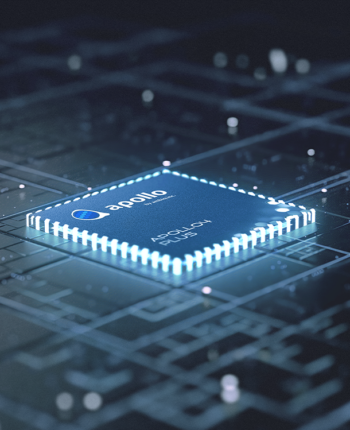Practical ultra-low power endpointai Fundamentals Explained
Practical ultra-low power endpointai Fundamentals Explained
Blog Article

DCGAN is initialized with random weights, so a random code plugged in to the network would crank out a completely random picture. Nonetheless, when you might imagine, the network has millions of parameters that we can easily tweak, along with the aim is to find a placing of those parameters which makes samples created from random codes seem like the teaching data.
Prompt: A gorgeously rendered papercraft earth of the coral reef, rife with vibrant fish and sea creatures.
Prompt: A litter of golden retriever puppies taking part in in the snow. Their heads come out from the snow, included in.
The datasets are utilized to make feature sets that happen to be then used to teach and Examine the models. Check out the Dataset Manufacturing facility Guide To find out more regarding the offered datasets together with their corresponding licenses and limitations.
The Audio library can take benefit of Apollo4 Plus' very economical audio peripherals to capture audio for AI inference. It supports various interprocess communication mechanisms to make the captured info accessible to the AI feature - one particular of such can be a 'ring buffer' model which ping-pongs captured data buffers to facilitate in-area processing by aspect extraction code. The basic_tf_stub example consists of ring buffer initialization and use examples.
These visuals are examples of what our Visible planet appears like and we refer to these as “samples from the genuine knowledge distribution”. We now build our generative model which we would like to teach to generate visuals such as this from scratch.
Prompt: A gorgeous silhouette animation shows a wolf howling within the moon, experience lonely, till it finds its pack.
The creature stops to interact playfully with a group of tiny, fairy-like beings dancing about a mushroom ring. The creature appears up in awe at a sizable, glowing tree that is apparently the guts on the forest.
The new Apollo510 MCU is simultaneously the most energy-successful and best-effectiveness solution we have at any time created."
Up coming, the model is 'properly trained' on that knowledge. Finally, the educated model is compressed and deployed into the endpoint units where by they will be set to work. Each of these phases requires important development and engineering.
Basic_TF_Stub can be a deployable key word recognizing (KWS) AI model based upon the MLPerf KWS benchmark - it grafts neuralSPOT's integration code into the present model so as to enable it to be a performing key word spotter. The code works by using the Apollo4's lower audio interface to collect audio.
When the number of contaminants inside a load of recycling becomes also terrific, the supplies will be sent to your landfill, even if some are ideal for recycling, since it prices extra money to sort out the contaminants.
Autoregressive models for instance PixelRNN in its place coach a network that models the conditional distribution of each particular person pixel supplied past pixels (to your still left and also to the very best).
far more Prompt: A giant, towering cloud in the shape of a person looms over the earth. The cloud gentleman shoots lighting bolts all the way down to the earth.
Accelerating the Development of Optimized AI Features with Ambiq’s neuralSPOT
Ambiq’s neuralSPOT® is an open-source AI developer-focused SDK designed for our latest Apollo4 Plus system-on-chip (SoC) family. neuralSPOT provides an on-ramp to the rapid development of AI features for our customers’ AI applications and products. Included with neuralSPOT are Ambiq-optimized libraries, tools, and examples to help jumpstart AI-focused applications.
UNDERSTANDING NEURALSPOT VIA THE BASIC TENSORFLOW EXAMPLE
Often, the best way to ramp up on a new software library is through a comprehensive example – this is why neuralSPOt includes basic_tf_stub, an illustrative example that leverages many of neuralSPOT’s features.
In this article, we walk through the example block-by-block, using it as a guide to building AI features using neuralSPOT.
Ambiq's Vice President of Artificial Intelligence, Carlos Morales, went on CNBC Street Signs Asia to discuss the power consumption of AI and trends in endpoint devices.
Since 2010, Ambiq has been a leader in ultra-low power semiconductors that enable endpoint devices with more data-driven and AI-capable features while dropping the energy requirements up to 10X lower. They do this with the patented Subthreshold Power Optimized Technology (SPOT ®) platform.
Computer inferencing is complex, and for endpoint AI to become practical, these devices have to drop from megawatts of power to microwatts. This is where Ambiq has the power to change industries such as healthcare, agriculture, and Industrial IoT.
Ambiq Designs Low-Power for Next Gen Endpoint Devices
Ambiq’s VP of Architecture and Product Planning, Dan Cermak, joins the ipXchange team at CES Pet health monitoring devices to discuss how manufacturers can improve their products with ultra-low power. As technology becomes more sophisticated, energy consumption continues to grow. Here Dan outlines how Ambiq stays ahead of the curve by planning for energy requirements 5 years in advance.
Ambiq’s VP of Architecture and Product Planning at Embedded World 2024
Ambiq specializes in ultra-low-power SoC's designed to make intelligent battery-powered endpoint solutions a reality. These days, just about every endpoint device incorporates AI features, including anomaly detection, speech-driven user interfaces, audio event detection and classification, and health monitoring.
Ambiq's ultra low power, high-performance platforms are ideal for implementing this class of AI features, and we at Ambiq are dedicated to making implementation as easy as possible by offering open-source developer-centric toolkits, software libraries, and reference models to accelerate AI feature development.
NEURALSPOT - BECAUSE AI IS HARD ENOUGH
neuralSPOT is an AI developer-focused SDK in the true arm mcu sense of the word: it includes everything you need to get your AI model onto Ambiq’s platform. You’ll find libraries for talking to sensors, managing SoC peripherals, and controlling power and memory configurations, along with tools for easily debugging your model from your laptop or PC, and examples that tie it all together.
Facebook | Linkedin | Twitter | YouTube